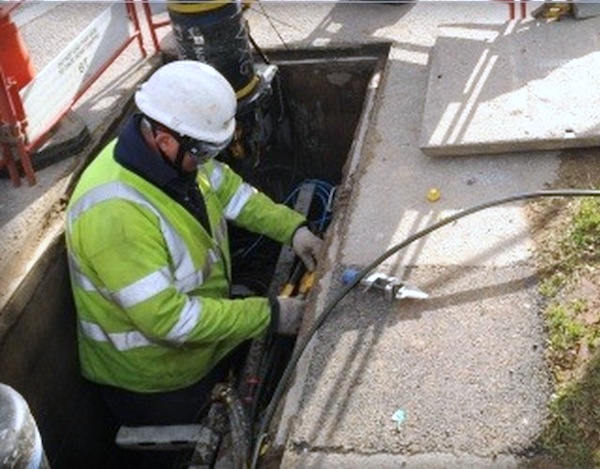Australian government using wrong NBN rollout strategy, leaked report warns

Australia's newly elected Coalition government is taking the wrong approach to rolling out its alternative national broadband network (NBN) strategy by planning it in two separate stages rather than completing the project in one go, the company building the network has warned in advice prepared for incoming communications minister Malcolm Turnbull.
The Coalition went to the September 7 election with an alternative to the previous government's fibre-to-the-premises (FttP) rollout – which would deliver direct fibre-optic connections to 93 percent of Australia's homes and businesses by 2021 – with an alternative fibre-to-the-node (FttN) NBN to be built in two stages.

The first stage would use VDSL2 technology to deliver a minimum of 25Mbps services across the country by 2016; some 90 percent of premises would then be progressively upgraded to 50Mbps by 2019 using VDSL2 'vectoring' technology, which delivers faster speeds over short distances over good-quality copper access network (CAN).
Noting that this approach "implies two truck rolls," the NBN Co advice – prepared during the pre-election caretaker period by NBN Co at the request of the former Department of Broadband, Communications and the Digital Economy (DBCDE), and intended to form part of the 'Blue Book' briefing given to help the new minister hit the ground running – indicates that the need to retrain the workforce of NBN Co and its many subcontractors would pose an additional significant risk to the rollout, which is already "unlikely" to hit its 2016 targets.
NBN Co's analysis concluded that a two-tiered approach "would increase network rollout costs and end-user disruption" and needlessly delay the move to VDSL2 'vectoring' technology, which Telstra and Alcatel-Lucent recently began testing.
"VDSL2 with in-cabinet vectoring is proven and commercially available today, so there is no need to delay a deployment to wait for the technology to come online," the report warns.
"A number of successful trials have been conducted since 2010, and the technology is being deployed on a commercial scale in Austria and Belgium.”
NBN Co's analysis suggested a two-tiered approach "would increase network rollout costs and end-user disruption" and needlessly delay the move to VDSL2 'vectoring' technology.
"NBN Co should deploy the best available xDSL technology in the FTTN network from the start of the rollout."
The confidential report, parts of which were published this week by Fairfax Media, confirmed that the project was "unlikely" to meet Turnbull's election 2016 goal and might only make its 2019 deadline if a long list of complex and significant issues was resolved within approximately the next 18 months.
Meeting such tight deadlines and the Coalition's promise of a cheaper NBN would require as efficient a rollout as possible, the report warned, suggesting that a "significant" effort to remediate Telstra's copper access network (CAN) for 25Mbps services, and further work to prepare it for 50Mbps, would involve duplication of efforts and should ideally be combined.
The previous government negotiated an $11b access arrangement to let it run its FttP cabling through ex-monopolist Telstra's nationwide network of underground ducts. However, the rollout ran into trouble earlier this year after asbestos was discovered in pits into which equipment for the FttP network, leading Telstra to temporarily shut down its rollout until additional training and remediation work could be completed.
There have also been widespread concerns about the "dilapidated" state of the company's nationwide telephone and xDSL infrastructure, which progressively expanded over the past century.
"Further remediation work may be required to increase speeds to 50Mbps," the report warns. "Therefore it makes sense that the network is remediated once only to achieve the target of 90% of the fixed-line network to receive minimum download speeds of 50Mbps in 2019."
Although the scope of necessary remediation of Telstra's copper "cannot be accurately determined until NBN Co gains access to Telstra's copper plant records and commences VDSL2 trials," NBN Co warned that "significant network remediation will need to occur in the copper plant including the removal of bridge taps, poor joints and any other physical impairment that impacts performance."
Turnbull has rubbished the NBN Co advice, confirming that he had read its contents but slamming it as a partisan, outdated document – despite evidence confirming it was prepared during the pre-election caretaker period.
The full Blue Book report, for which the NBN Co document was prepared, has been suppressed by Turnbull despite widespread calls for its release and his earlier promises that he was open to hearing the "unvarnished truth" about the NBN rollout.